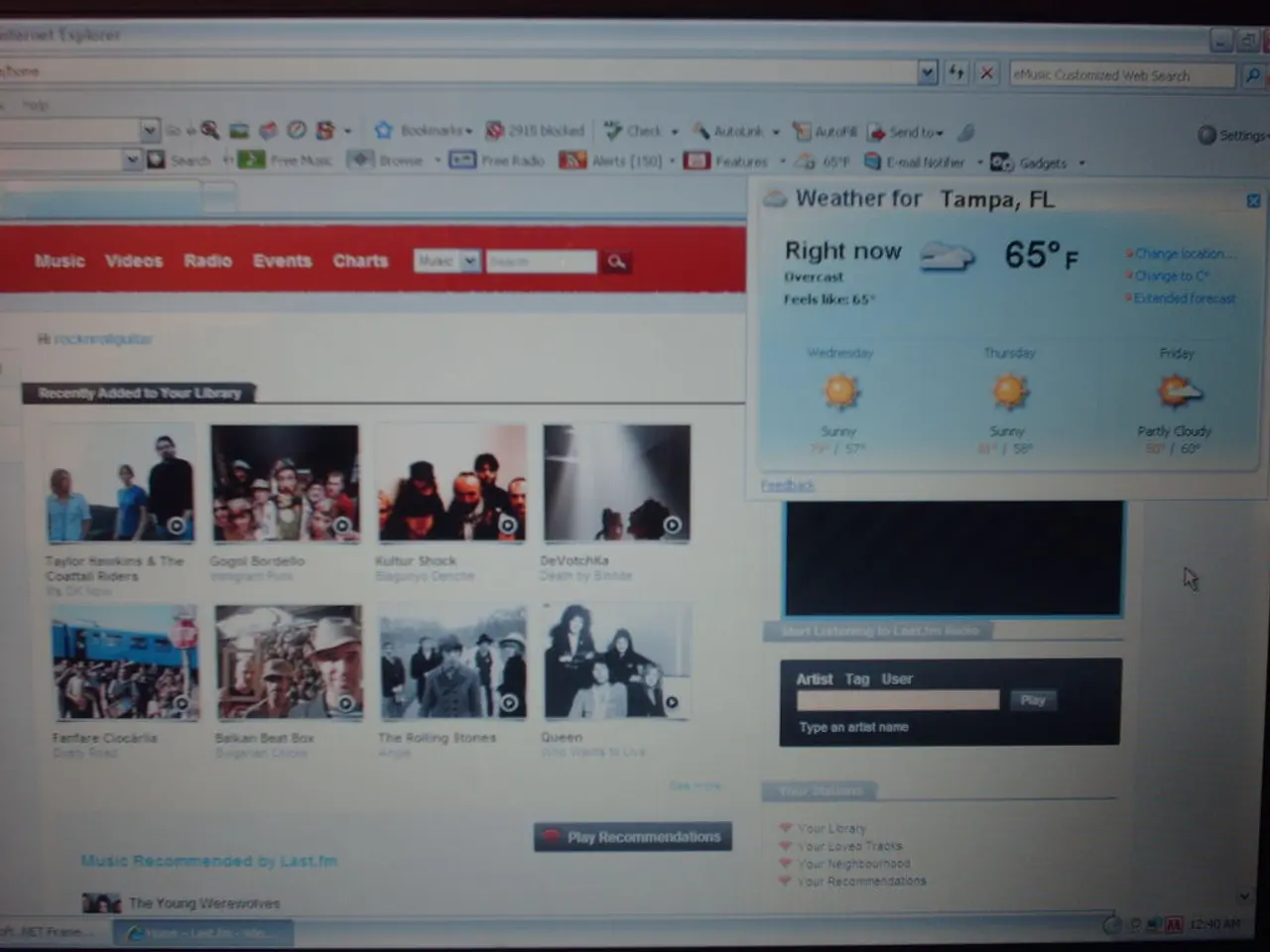Exploring Digital Databases
In today's digital age, conducting research for a project can be a daunting task. However, with the help of tools such as Web of Science and Google Scholar, organizing online research sources can become an efficient and streamlined process. Here's a guide on how to make the most of these tools and other resources.
Web of Science: Precise Citation Tracking and Targeted Searches
Web of Science is a valuable resource for precise citation tracking and targeted field-specific searches. It offers a feature called Cited Reference Searching, which allows you to find articles citing key theorists or seminal works, helping you map research influence and identify relevant studies through citation networks. You can refine your results by categories such as subject area, document type, or author to focus your research efficiently.
Google Scholar: Broad Coverage and International Sources
Google Scholar provides broad, interdisciplinary, and international coverage, including theses, books, conference papers, and non-English materials. While it has some data quality and duplication issues, its broad scope helps discover a wide range of materials not always indexed by Web of Science. By connecting Google Scholar with institutional resources, you can enhance access to full texts.
Organizing Your Sources
To keep your sources well-organized, consider exporting citations from these databases into reference management tools like Zotero, EndNote, or Mendeley. These tools help you store, tag, annotate, and cite sources consistently across your project.
Prioritizing Sources
Use advanced sorting and filtering features (such as sorting by citation count or date in Web of Science) to prioritize highly influential or recent sources. Google Scholar Metrics can help you gauge publication visibility and influence, aiding you in selecting reputable journals or articles.
Awareness of Tool Limitations
It's important to be aware of each tool's limitations. Web of Science, for instance, is subscription-based with limited journal coverage and uneven subject depth, especially in arts and social sciences. Google Scholar, on the other hand, has limited search features and potential duplicates due to varied citation formats.
Complementing Your Research
To ensure comprehensive coverage, consider complementing these tools with other databases (e.g., Scopus, OpenAlex) or library resources, especially if they are relevant to your field.
By combining Web of Science's structured citation tracking with Google Scholar's breadth, and organizing your sources systematically in reference management software, you can effectively collect, assess, and manage research literature during your project.
For instance, Web of Science links every article to those it cited and those that cited it, while Google Scholar allows for in-text keyword search and includes many mediums beyond journal articles.
Remember, Web of Science is a human-curated database that includes reputable journal articles, while Google Scholar creates citations for sources and allows exporting them in various formats. Applications like Mendeley or Zotero have tools for downloading and organizing PDF sources, as well as automating citations.
In conclusion, by following these strategies, you can make the most of Web of Science, Google Scholar, and other tools to streamline your online research during a project, ultimately saving you time and effort.
- To enhance your junior paper's education-and-self-development process through online-learning, you can made use of resources such as Web of Science and Google Scholar for precise citation tracking, targeted field-specific searches, and broad, interdisciplinary coverage, respectively.
- Organizing your learning materials from sources like Web of Science and Google Scholar becomes manageable with the help of reference management tools such as Zotero, EndNote, or Mendeley, where you can efficiently store, tag, annotate, and cite sources consistently throughout your project.




